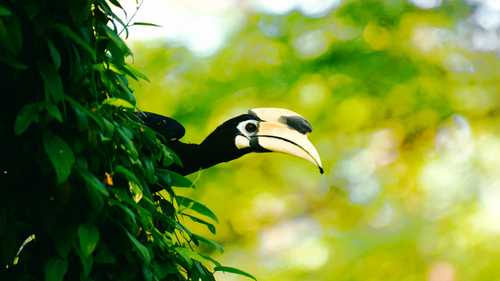
Interview with conservationist, zoologist, and field recordist Chris Hails
Chris Hails grew up in Bolton, an industrial town in the north of England. He enjoyed attending university in Scotland, and lived in the country for eight years. Then, “by way of a big change”, his first “serious job” – teaching zoology and ecology to students at the University of Malaya – gave him an opportunity to move to Kuala Lumpur, Malaysia. He then moved to neighboring Singapore to work as an environmental advisor for the government there.
Chris has “spent all [his] life either studying, researching, or trying to save the environment in a biological context”. Now retired, he’s based in Switzerland, where for many years he was conservation director for WWF International.
Here, Chris speaks to earth.fm curator Melissa Pons about his lifelong work in academia and conservation and his love of the natural world – from watching David Attenborough series as a child to writing books, building a digital collection of bird sounds, and even helping hornbills to establish themselves in urban Singapore. He also offers many useful tips for field recordists, offers his perspective on changes to the natural world over the past few decades, and suggests ways to reduce rampant biodiversity loss.
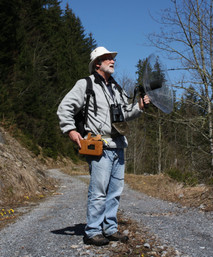
The following has been edited for clarity. The full interview will soon be released as an episode of the Wind Is the Original Radio podcast!
Do you consider your work to be scientific, artistic, or a combination of both?
I started my life as a researcher. So, I guess, for many years I considered myself a scientist – but then I spent 25 years working for WWF as a conservationist. And conservation involves an awful lot more than simply the science; science alone doesn’t solve it.
I still consider myself a scientist, but if you are going to promote conservation, you’ve got to be a bit of an artist as well, because you’ve got to be able to make your topic attractive to people. Conservation isn’t something that people necessarily want or need, or they think they need, and so you’ve got to make it enticing, attractive. But I don’t really consider myself an artist, I just try to make my work welcoming to a layman, if you like.
Do you have any advice on bridging the gap between your passion for field recordings of nature and the general public’s disconnection from the natural world? Are there ways to bridge the gap between recordists and the public?
It’s difficult. We have become disconnected from nature because people don’t think about the consequences of their behavior or their consumption patterns for the planet. So that comfortable life that many of us enjoy comes at a cost, and that cost is mostly hidden from people.
On the other hand, there’s now more nature documentaries on TV than there ever existed in the world before. One of my heroes is David Attenborough, and one of my earliest memories is watching some of his Life programs with my dad on a little black and white television. One of those memories was his visit to Komodo Island, looking for dragons. And I said, ‘Dad, do dragons really exist?’ He said, ‘Well, we better watch telly tonight and see.’ I will never forget that documentary. My work with WWF took me to many places, but I only got to Komodo for the first time about three years ago and actually saw them for myself. That was a big moment.
But this beauty on television can lull everybody into a false sense of security about everything being okay. And everything is not okay. It’s too easy to watch a nice documentary and say, ‘That’s not my place. I live in the middle of a big city, so the city is what it is. But look, this beautiful place still exists, and so everything’s okay.’
But everything isn’t okay. I was looking at the news online this morning, and what have we got? Massive floods in New Zealand. Big storms in Brazil. And this tragic earthquake in Turkey. Nature can be very, very harsh to us. There’s very little we can do about earthquakes, but floods, forest fires; we’ve been going through cycles of forest fires all over the world over the last two decades. This is us living with climate change right now. So how do you connect people to these environmental tragedies that are taking place? That’s the challenge.
I’ve always tried to connect people. I started my career as a lecturer, and I was teaching people. When I became a government adviser in Singapore I wanted to popularize the work that I was doing, so I wrote two books on the birds of Singapore, one a scientific treatise, the other one a popular book. And I deliberately made it a popular book to try and make it easy. Nature’s hard for people to get into. Things are difficult to identify when you go for a walk and sounds are difficult to identify when you hear them. So trying to make nature more easily accessible has been a thread that’s gone through my life, either through writing, or, these days, with my recordings.
I still consider myself a scientist, but if you are going to promote conservation, you’ve got to be a bit of an artist as well.
When I started to build up a collection of recordings on my computer, I thought, ‘This is like a digital stamp collection. Is it of any use to anybody?’ Then I invented my website, Wildechoes, because, in the digital age, you can have a picture, you can have a sound, and you can have text all together on one webpage. In my previous life, you bought a book with black and white text, with a couple of CDs on the inside cover. Quite frustrating.
In your experience, is it important or worthwhile that people can identify animal vocalizations? Does this bring people closer, increase enthusiasm, or open something in their perception?
I think being able to identify the sounds around you is one route into a better appreciation of nature. When I’ve taken groups out and identified the different sounds that you can hear, people say, ‘Wow, I never realized there was so much out here.’
I first got into sound recording when I went to Malaysia. I’d learned all my biology in England and Scotland and suddenly found myself nearly sitting on the equator in tropical rainforests. So I went through this tremendously steep learning curve, but I realized quite quickly that if I was going to do any meaningful bird work there, I ought to learn some sounds. Because you go into a tropical rainforest, you see lots of trees and you hear lots of birds, but you can’t see the birds that easily. So that’s what started me recording, way back in the seventies, simply to teach myself what was around.
Later, I ended up doing surveys in different forest types and that type of thing, where knowing the sounds was very, very important. I found it reasonably easy to learn different sounds. I write the way I do now to try and help people have that same ease. Because if you do know what’s out there, if it helps people to develop a love for nature, if I can help people to feel about nature the way that I feel about nature, I think the world would be a better place.
But if you have helped people to open their ears and understand what is going on, they can also hear the negative stuff. You can certainly think about what that chainsaw is doing in the distance. You can certainly start thinking about the digger or the bulldozer that is shifting earth to one side, someplace. Especially as a sound recordist, intrusive noise is my biggest enemy, whether it’s a plane flying overhead or the cars on the autoroute in the bottom of the valley. I’ve become much more aware of all that through my recording and realizing that this is something that’s intrusive on my recording, but it’s also the stuff that’s impacting on the planet in a big way.
When I was in the tropical rainforest, back in the seventies and early eighties – when there wasn’t as much stuff moving around, and there certainly weren’t this many planes flying – I felt as though I was in a cathedral. It’s the only way that I can describe it, because there were these huge tall trees with a canopy over your head and all the different layers of the forest. It was so complex, but it was this canopy at the top that made you feel you were inside something. And the wildlife sounds were my choir singing in the cathedral. This was the way that I felt about it. I’m not a religious person, but it became almost a sacred thing.
Trying to make nature more easily accessible has been a thread that’s gone through my life, either through writing, or, these days, with my recordings.
And at that point in time, countries in Asia were discovering palm oil and replacing rainforests with oil palm plantations, and I still feel today, when I see forests being cut down like that, ‘This is sacrilege.’ That was the feeling that it engendered in me.
Does ‘sacred’ constitute some sort of spiritual practice?
I think it probably does. I had never thought about it. In my life, I never meditated. I now meditate on most days of the week. But meditation was something I only discovered about six or seven years ago.
My partner suggested that I try meditation. I started and I realized, when I’m recording and I’m walking and listening, my mind can also be wandering around. I realized that was a kind of meditation, and I think this was something that I had been getting out of field recording that I hadn’t actually realized, because you have to be calm, you have to be quiet. I’m usually walking in a beautiful place. I’m walking slowly. I’m focused on what I can pick up that’s around me. And once I start recording, I’m totally focused. I’ve got my headphones on. I usually have a parabola. I’m very much into individual species, and I focus on this [particular] beast.
That focusing, it’s a kind of meditation and it could be a spirituality of some sort. When I’m doing that, I get immense pleasure out of it. It’s hard to describe the parabola and the headphones; it’s not that they just bring the bird or the animal to me, to my ears – I feel this is going to sound crazy – it takes my head to the animal. And I feel like I’m there with it.
What was your most significant experience related to nature or field recording?
There’s always an excitement to recording something new. I can remember one particular day in Malaysia, when I was recording on magnetic tape. There’s a particular gibbon there called a siamang, with a very strong call, a bit like howler monkeys. There was a family group in a rainforest tree right above my head. And the sounds of their calls just came pouring down out of the tree. It was fantastic, such a strange noise, like an alien race suddenly invaded that space. That was one occasion that I’ll never forget.
🎧 Listen to Himalayan Morning by Chris Hails on earth.fm ☁️
These days, it’s finding something new, finding a new call that you’ve never heard before. I was always naive and thought that birds only ever made one sound, and it was always the same sound.
More recently, I have taken to doing unattended recordings: leaving machines out in the field, especially for nocturnal animals or maybe an animal that I don’t want to disturb. There has been a large increase, over the last 12 years, of wolves in Switzerland, and they are breeding quite well. And there’s a pack about 15 kilometers [9.3 miles] from where I live. I’d heard them in the far distance, I guessed where they might be. So I put a couple of recorders out and did get them. I’ve never seen them, but knowing that they’re there I was able to capture their sound.
But it’s going through the recordings afterwards and finding this sound and thinking, ‘Wow, listen to that.’ It’s fantastic. When I’ve got my long recordings, I always look at the sonogram on the screen and I scroll and suddenly realize there’s a good recording, there’s something there, and you’ve got that eureka moment that; okay, you didn’t experience it live, but it’s there and you’ve captured it. I think some people are a little bit snobbish about leaving a recorder unattended, but not everything is going to take place with human presence around it.
What other changes have you noticed in recordings of nature in general?
I have never been very systematic from a scientific point of view, in terms of using sound as a means of monitoring the environment. But the understanding of that has blossomed in the last six or eight years.
So I’ve never been able to quantify change other than the fact that it gets noticeably harder to record things. And it’s declining populations of wildlife. The first step towards extinction is a reduced population size. And if the population size is not there, there’s not as much out there to record. I come back, these days, more disappointed in the morning than energized, because it gets that much harder, because there’s less things around.
It does show up very clearly in statistics. Organizations like Bird Life monitor bird populations very closely. In my native Great Britain, there’s a bird called a greenfinch, which I believe has just been put on the red list of the populations that have declined dramatically. For me it’s unthinkable that the greenfinch could be reduced so much, because it’s a very common finch species. So just seeing the decline in wildlife populations is quite depressing.
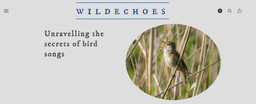
Climate change can affect things in horrible ways. Right now it is February and the sun is shining, there’s lots of things singing outside there now. I saw some water birds with young already out of the nest the other day, and yet in another month’s time it could be easily below freezing and snowing once more. So climate change is the biggest threat that we face. It’s incredibly destructive.
The demand for food of better quality and bigger quantity and less cost means that farming has got hugely destructive: monocultures that are sterile from a wildlife point of view, and the use of pesticides. The European Union is still refusing to put controls on some of the nicotinamide type pesticides. It’s maximizing agricultural production, and they have to figure out a way to feed everybody and farmers have to be able to make a living. We know the solutions and what needs to be done for climate change. We know that there is technology out there that can assist farmers to be more efficient without damaging the environment. It’s just a case of going out and getting things applied.
Should people demand structural change?
I do believe those kinds of changes are necessary. When I was working in WWF, whilst some organizations were campaigning for no more cutting of forests, wanting to ban tropical hardwoods and things like this, we realized that, well, this isn’t going to work. Bans don’t usually work. And you’ve got to think of the people whose livelihoods depend upon that forest and upon the timber production. So how can we find a way of producing timber that is sustainable?
And so, out of the WWF forest program, came the Forest Stewardship Council, with a little label, with a little tree with a tick on it, that could certify a piece of wood as coming from a forest that is sustainably managed. In other words, we don’t take more wood out of a forest each year than can be replaced by natural growth.
And we then realized, well, maybe this can be applied elsewhere. Maybe it can be applied to fish in the sea. And so then comes the Marine Stewardship Council, and then later the Aquaculture Stewardship Council. And then with palm oil. There’s no way to stop the world demand for palm oil, but how can we produce palm oil with the minimum footprint and, again, a labeling scheme?
These labeling schemes are out there. They don’t solve all the problems. They’re very difficult to implement and very complicated to follow all the way through a supply chain. But it is a start towards this sustainable production of commodities that we depend upon on a daily basis. So having people educated to look out for these labels and make a choice in the supermarket to buy something that is sustainably produced is the first step. That does then rely on individual choice. And not every individual is going to look for those. But then, if one can influence the supermarket chains to only stock certified sustainable goods and the suppliers to provide only sustainably produced goods, then that takes the onus off the individual shopper. It doesn’t matter what you take if it’s all got some sort of accreditation. So we’ve just got to try and magnify that and do it faster.
And buying locally: if you can buy tomatoes grown by the farmer down the road, rather than ones being imported by ship, plane, or lorry from thousands of kilometers away, then you’re reducing the carbon output of delivering that.
So people thinking carefully about what they eat, what they buy, is incredibly important. But they’ve got to be motivated. They’ve got to really feel, ‘I want to do this.’ It’s not as convenient as just picking any old packet off the supermarket shelf. You’ve got to put a little bit more into it. So we have to persuade people to feel about nature the way we feel about it.
Is there something you are optimistic about?
I wouldn’t get out of bed in the morning if I wasn’t optimistic. There are lots of things that can be done. When I moved out of academia I went to Singapore to work for the government. Singapore is a very densely populated island with high-rise accommodation. I was part of a program of greening and I was using birds as my indicator species for its success or otherwise, and I was able to identify the richest spots for nature in the island which could be conserved. And I looked at urban parks, looked at how they were designed, looked at the types of trees that were being planted there and made recommendations for landscaping, for nature in these city parks. And then connected the green oases in different parts of the islands using the canal system, the drainage system, to create a set of green corridors. And I left there at the end of the eighties after having laid down the plans, and very talented people have continued that work subsequently.
We have become disconnected from nature because people don’t think about the consequences of their behavior or their consumption patterns for the planet.
Now there are hornbills breeding in the city center in Singapore. It’s worked amazingly well. I wrote a book on the birds of Singapore to try and get people interested in bird-watching and that type of thing. Since I left, digital cameras have become the fashion with big, cheap lenses, and there are lots of avid birdwatchers and bird photographers. When I get a chance to go back there and see a group of birdwatchers, I feel very good about it because I think, well, this can really work. There are solutions out there. You’ve just got to work towards them and you’ve got to have the political motivation to do it as well. Politicians make decisions that affect our lives. We have to elect the right politicians to do the right things.
The biggest challenge is that politics runs on a three- or five-year cycle, and politicians are always very keen to be reelected and will do what they think the people who vote for them want, in order to get voted for during the next cycle. And this is where public education and awareness is really important. The more people that are aware and sensitive to nature, the better the chances of us electing politicians that will – even though it could be unpopular in some quarters – make the right choices for the environment. Because, at the end of the day, it’s a bit of a hackneyed phrase, but we only have one planet. This planet is our home, it’s our garden, and if you don’t take care of it, it’s going to go; we’re seeing that happen.
Economic growth has always been the driver and we have not valued the environment within those equations; everything goes back to GDP [gross domestic product], and GDP is all about dollars. But GDP doesn’t measure everything, and so many times it is being demonstrated that it is actually more economically beneficial to keep what you’ve got than pay for the damage afterwards, when things go wrong. There is a movement amongst economists to look at how our world can work without economic growth. Not everybody believes in economic growth and there are strong arguments that we can have a very healthy, very comfortable lifestyle without constantly needing more, and that the value of a forest standing there is greater than what it’s going to cost you to put it back once you’ve taken it away, with all the floods and droughts and whatever is the consequence of that.
So having a better evaluation of the environment and having that evaluation factored into day-to-day decisions is important. Again, the methods are out there, but they’re not always the most comfortable thing to apply.
It’s a case of, ‘How bad do things have to get before we carry out those changes?’ We’re beginning to see now how bad things can get.
Where should someone start who is new to bird vocalizations and species identification?
If you want to learn, I would say just get yourself some simple recording equipment and go out and do it. These days you can buy a microphone and a small recording machine at a reasonable cost. You can even do it with your mobile phone, and most of us have mobile phones. Go out and start. One of the things that I found was that, if we go back to my rainforest days, through recording something, I was actually absorbing the sound and learning to memorize it just through that physical act of recording.
Once you’ve got a recording, then of course you’ve got to identify it. There are tools out there. Cornell University has an online tool called Bird Net where you can upload a sound and it will give you the probability of what species it could be. They also have another tool called Merlin, which is an app for your phone. There is a website called Xeno Canto, which is a huge repository of bird sounds, maybe too many for a beginner. It’s not such an easy tool to use because of the variety of sounds that are in it.
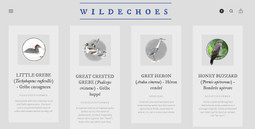
And there’s this guy called Chris Hails, who’s got a website called Wildechoes with 100 or so species on it, and that one’s quite interesting too.
For beginners, another useful thing is to find a community, a group of people with similar ideas. In the UK, there’s the Wildlife Sound Recording Society. There are similar ones in Australia and North America. So there are groups of nature recordists that get together. There are online groups as well. There’s one called Nature Recordists, which is an online community where people share ideas, share problems, share solutions; there’s a lot of learning if you can make contact with others through an online group like that.
For me, it was a Yahoo group. It was just fantastic because I’d learned recording self-taught in Malaysia with analog materials. And the funny story is that my youngest son went to university and studied sound technology, and in his first year he sent a paper to me about somebody who built a microphone to be able to record nocturnal migrating birds from their garden. He said, ‘Hey, dad, this looks like it could be a good project for you.’ Now, I wasn’t going to start building microphones for nocturnal birds at that point in my life, but what it did was open my eyes to digital recording. This was in the early 2000s, and I suddenly realized that I didn’t have to hump a big piece of heavy equipment around anymore. I could get a little thing that more or less fitted in your pocket.
And not only that, on my laptop computer, I could then make sonograms and do sound editing. This was stuff that used to frustrate me previously because editing cassette tapes and things like that is a nightmare. And there was not a device in Asia that could make a sonogram for me when I was living there. So suddenly this was all on my desktop; it really opened my eyes and I wanted to learn. So I found that Yahoo Group, which was started by Martin Stewart, and I just couldn’t believe the way that people were so generous and sharing their ideas. I learned a huge amount about how to go about sound recording from that group.
I was inspired by the writings of an American professor called Donald Kroodsma who wrote a book called The Singing Life of Birds. Now, this was all about American species, and I thought, ‘Wow, wouldn’t it be great to have a book like that for European species?’ Because he’s very analytical but can write in a very easy manner for the non-scientist. And then shortly after that appeared a series of books by a group that called themselves the Sound Approach. Mark Constantine and Magnus Robb and others are part of the team that put this together. They’ve now got a great website and a series of very nice books which have got sonograms in them. And I must confess, they were also an inspiration for me in building my own website and a great help for learning.
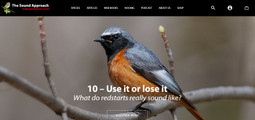
Another book that I’ve always enjoyed is by one of the very earliest nature recordists, Ludwig Koch, who in the 1930s, I think, he might have even started before then, started to do nature recording. His Memoirs of a Bird Man is very interesting. It’s very nice to see how these guys would go with tons of equipment out into the field and still be able to get good recordings.
Bernie Krause – Wild Soundscapes and The Great Animal Orchestra – has done an awful lot to open people’s minds about wildlife sounds and how they fit together in a soundscape, which is interesting.
I’ve not seen many films that have inspired me from a sound point of view, but you mentioned, the other week, Liz McKenzie and The Singing Planet; I bought it and I found that a wonderful documentary. I could identify a lot with the sentiments that the various people in the film were expressing.
Do you have many unsolved mysteries?
Oh, yeah, lots of them, dozens of them. As the years go by, I quite often think I should just go back and listen to every recording that I marked as ‘unknown’ and see whether I now recognize it. Because your learning accumulates as you go along, doesn’t it? You get better and better at it.
Featured photo (Oriental Pied Hornbill at Pasir Ris Park, Singapore) by Mark Stoop on Unsplash
Earth.fm is a completely free streaming service of 1000+ nature sounds from around the world, offering natural soundscapes and guided meditations for people who wish to listen to nature, relax, and become more connected. Launched in 2022, Earth.fm is a non-profit and a 1% for the Planet Environmental Partner.
Check out our recordings of nature ambience from sound recordists and artists spanning the globe, our thematic playlists of immersive soundscapes and our Wind Is the Original Radio podcast.
You can join the Earth.fm family by signing up for our newsletter of weekly inspiration for your precious ears, or become a member to enjoy the extra Earth.fm features and goodies and support us on our mission.
Subscription fees contribute to growing our library of authentic nature sounds, research into topics like noise pollution and the connection between nature and mental wellbeing, as well as funding grants that support emerging nature sound recordists from underprivileged communities.
